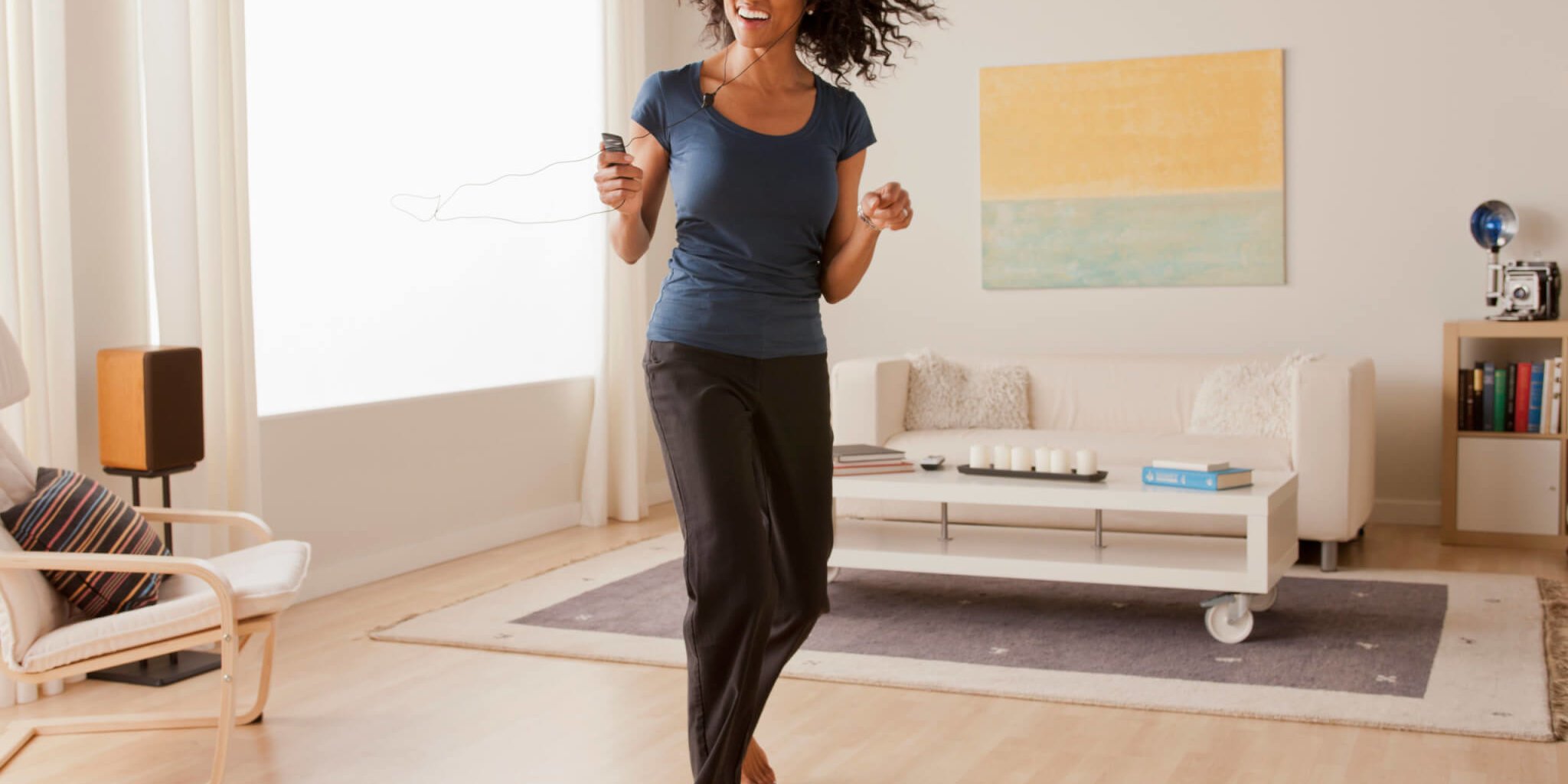You know what I don’t find relaxing? Relaxing.
I have generalized anxiety disorder, which is defined as excessive worry or anxiety without any identifiable cause. And it means that most of the time, I am far from relaxed.
When we picture someone relaxing, we generally assume it’s something nonactive, like lying on a beach or taking a nap. These methods rarely work for me. My mind is constantly racing. I may get 20 minutes of reprieve on a beach some days, but if I try to stay past that, my thoughts kick right back into overdrive. And I do generally love naps, but I also have a toddler, so though I fall asleep for a little bit, my ear is always open waiting for him to call me.
To be honest, relaxing kind of stresses me out.
“Don’t you teach yoga?” you may be asking. Well, this is exactly why I was drawn to movement-based practices like yoga; they are scientifically proven to calm the nervous system.
Not all nervous systems are created equal; nor are all relaxation techniques. By getting to know yourself a little more clearly, you can determine what the best method will be for you.
Not all stress is created equal.
Believe it or not, we need stress. Yes, when we are in danger, but also to take action. It is what fuels us and helps us focus when we need to complete an important work project or a hard workout. Stress that is considered beneficial is called eustress, or positive stress.
The APA Dictionary of Psychology defines eustress as “a type of stress that results from challenging but attainable and enjoyable or worthwhile tasks.” Some common examples are traveling, planning a wedding, the anticipation of a job interview or first date (though these can sometimes feel like the same thing, no?).
Fritz Perls, the developer of Gestalt therapy, famously said, “Fear is excitement without the breath.” That same feeling you get going over the peak of a rollercoaster is similar to the one you get when you forget something at home. The difference is that the former is often a chosen experience that may lead to joy, while the latter can be distressing for many people.
For instance, let’s say you are terrified of rollercoasters; then going on the ride would be distressing. But let’s say rushing home would mean you get to see your son before he heads back to college afterall; then that inconvenience could turn into a positive stress.What determines whether something is positive or negative stress is our interpretation or belief around the event. Another defining feature of eustress is that it’s often temporary. Distress can be both acute, like the scary rollercoaster ride or a near accident, or chronic, like the loss of a loved one or a serious illness.
It’s when stress becomes chronic that we risk a host of medical concerns.
To understand the body’s response to stress is to understand how to relax.
Did you know that our body is primed to respond to stress before we even process what we are seeing? According to sources such as the Harvard Medical School, the way our brain processes stress is through the amygdala, our emotional processing center, which then sends a signal to the hypothalamus even before our visual centers have processed what is happening. This is why I can catch a ball thrown by my husband just before it hits my face, like a pro athlete, but never as accurately when we are playing an actual game.
The hypothalamus commands the autonomic nervous system, which controls all of the involuntary processes of our body. These include but are not limited to our heart rate, respiration, digestion, and blood pressure. This nervous system can be further divided into three sections: the sympathetic nervous system, which activates fight-or-flight (the two main stress responses); the parasympathetic nervous system, which is often called “rest and digest” and includes the fear response of freezing (a third response to stress); and the enteric nervous system, which controls our gastrointestinal functions.
When the sympathetic nervous system is activated, all of the body’s energy is redirected to fighting or fleeing. For example, all of the blood from our digestive and reproductive systems is funneled to the limbs. Our heart rate and respiration increase. Our pupils dilate so that we can see more clearly. Our muscles tense as they prepare the body to run or respond. And that’s just to name a few potential fight or flight responses.
This is why chronic stress leads to problems from benign responses like tight shoulders to more impactful issues like heart disease, infertility, and digestive problems. It’s no coincidence that there are 14 million reported cases of treated digestive issues in this country, and that’s treated cases!When under stress of any kind, good or bad, our body is primed to take action and move. This is why lying down may not always be the most effective way for people to relax.
Here are 5 ways to relax that don’t involve relaxing:
- Move your body: Exercise has been proven to reduce cortisol and adrenaline, which are the body’s two main stress hormones. It also stimulates endorphins. A Harvard Medical School article describes these as our “body’s natural painkillers and mood elevators.” Another reason movement is healing is that it helps to relieve physical tension.
You don’t necessarily need to do a yoga class or HIIT workout to reduce stress, either. Any kind of movement can be helpful in reducing stress symptoms. The next time a car honks at you in stopped traffic, try flapping your arms up and down and see if that helps calm you more quickly.
- Body-scan meditation: Fun fact, meditation is not about clearing your mind or emptying your thoughts. I repeat, meditation is not about trying not to think. Instead, mindfulness meditation invites a deeper level of awareness and attention. It asks us to focus so deeply on something that the rest of the world fades into the background, at least for a bit.
Try this: Lie on the floor and starting from your left foot, slowly bring your awareness to each body part, one by one. Take your time. You can go as slow and start as small as first feeling your pinky toe to a more macro approach of feeling the entire foot. Scan from your toes to your head.
- Eat mindfully: Speaking of mindfulness, we already talked about the effect of chronic stress on our digestion. In addition to the body being unable to process our food, there is the added challenge of either rushing to eat, not eating well, or being so caught up in whatever you are doing that you miss your body’s signals on when to stop eating or when to eat at all.
In Ayurveda, the oldest continually practiced form of medicine and from which many other forms of medicine have been derived, food is considered medicine. What we eat has the power to heal us or harm us. This gives us multiple times a day to practice slowing down and making wise choices. Maybe rather than going through the drive-through, you opt to eat a Shaklee 180® Meal-in-a-Bar. Or rather than taking your Life Shake™ in the car to go, carve out a few minutes to sit down and really enjoy it.
- Laugh often: Laughter is literally the best medicine. It has a variety of benefits, from the short-term effects of increasing endorphins and bringing in more oxygen. You read that correctly, a lot of the benefits are similar to exercising, which means you don’t necessarily have to hit the gym to combat chronic stress. Laughter has also been linked to improved immunity, and it is infectious, in a good way.
Laughing with another person activates mirror neurons in your brain, helping you feel both seen and more connected. Laughing by yourself is also beneficial and a recent study even showed that laughing at yourself can have medicinal benefits, as well.
- Hug someone or something you love: Oxytocin is often referred to as the love hormone and has been shown to have anti-stress benefits by lowering cortisol levels. It is released with physical touch and gaze and is especially prevalent during parent-newborn bonding. Humans are social creatures and touch is healing. But we may not need to touch another human to reap these benefits.
Oxytocin has been found in our pets, too. Studies show that when we gaze into our dog’s eyes and they gaze back, oxytocin is secreted by both of us. This is why service pets are so helpful and hospitals often bring in animals to pet.
Don’t let relaxing stress you out. Figure out what makes you feel good and then do more of it! We can’t avoid stress; in fact, we need it to get out of bed in the morning. But when it starts to become an all-day, every day affair, that is when we risk our health. Incorporate activates that induce helpful hormones like endorphins and oxytocin into your every day.
 Sarah Ezrin is a freelance writer, world-renowned yoga educator, popular Instagram influencer, and mama based in the San Francisco Bay Area. Her willingness to be unabashedly honest and vulnerable along with her innate wisdom make her writing, yoga classes, and social media great sources of healing and inner peace for many people. Sarah is changing the world, teaching self-love one person at a time. For more information please visit her website www.sarahezrinyoga.com.
Sarah Ezrin is a freelance writer, world-renowned yoga educator, popular Instagram influencer, and mama based in the San Francisco Bay Area. Her willingness to be unabashedly honest and vulnerable along with her innate wisdom make her writing, yoga classes, and social media great sources of healing and inner peace for many people. Sarah is changing the world, teaching self-love one person at a time. For more information please visit her website www.sarahezrinyoga.com.






